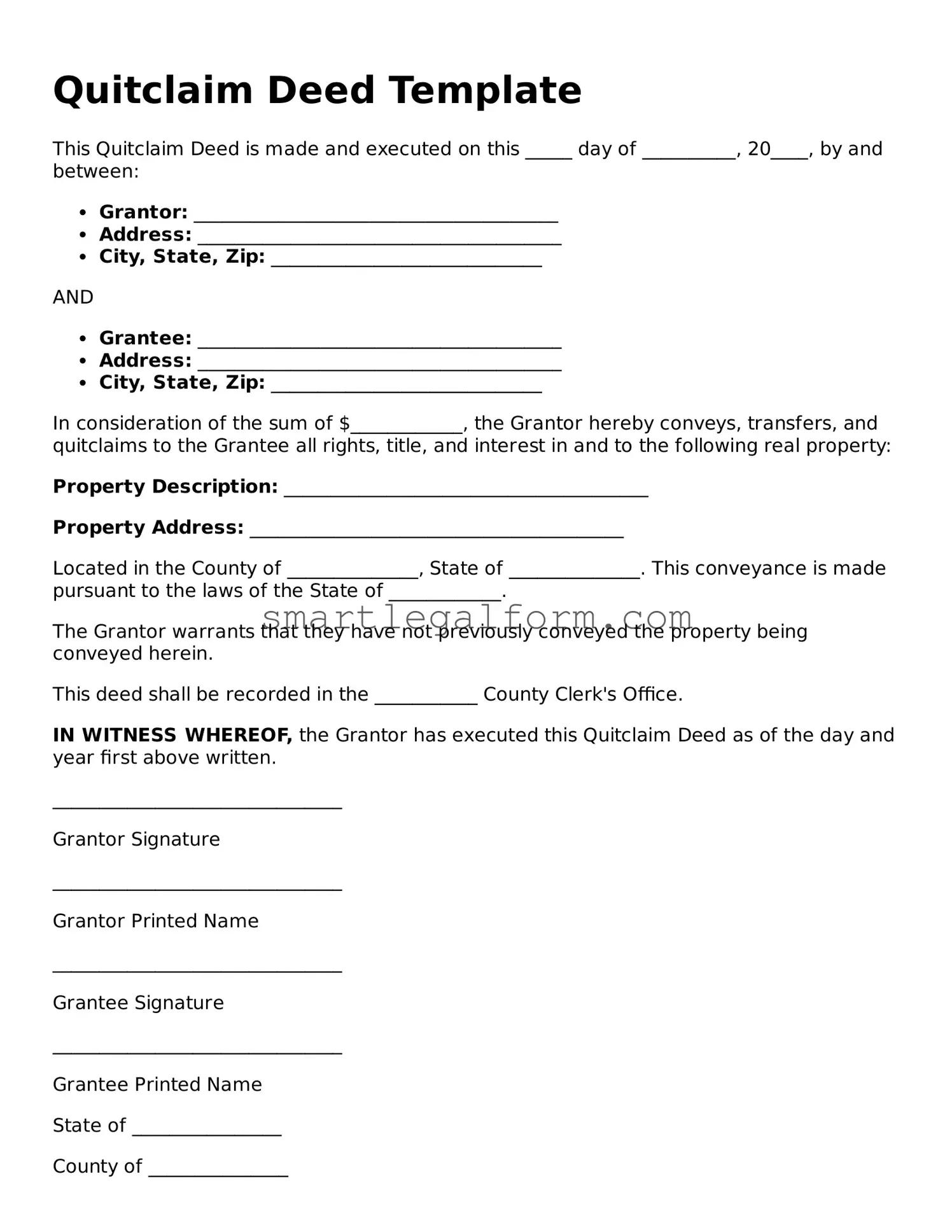Quitclaim Deed Template
This Quitclaim Deed is made and executed on this _____ day of __________, 20____, by and between:
- Grantor: _______________________________________
- Address: _______________________________________
- City, State, Zip: _____________________________
AND
- Grantee: _______________________________________
- Address: _______________________________________
- City, State, Zip: _____________________________
In consideration of the sum of $____________, the Grantor hereby conveys, transfers, and quitclaims to the Grantee all rights, title, and interest in and to the following real property:
Property Description: _______________________________________
Property Address: ________________________________________
Located in the County of ______________, State of ______________. This conveyance is made pursuant to the laws of the State of ____________.
The Grantor warrants that they have not previously conveyed the property being conveyed herein.
This deed shall be recorded in the ___________ County Clerk's Office.
IN WITNESS WHEREOF, the Grantor has executed this Quitclaim Deed as of the day and year first above written.
_______________________________
Grantor Signature
_______________________________
Grantor Printed Name
_______________________________
Grantee Signature
_______________________________
Grantee Printed Name
State of ________________
County of _______________
On this _____ day of __________, 20____, before me, a Notary Public, personally appeared ______________________________________, known or identified to me to be the person(s) whose name(s) is/are subscribed to the within instrument, and acknowledged that they executed the same.
Witness my hand and official seal.
___________________________
Notary Public Signature
Commission Number: ________________
My Commission Expires: _______________
